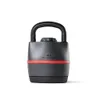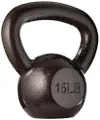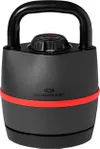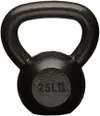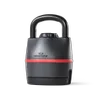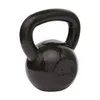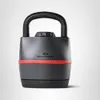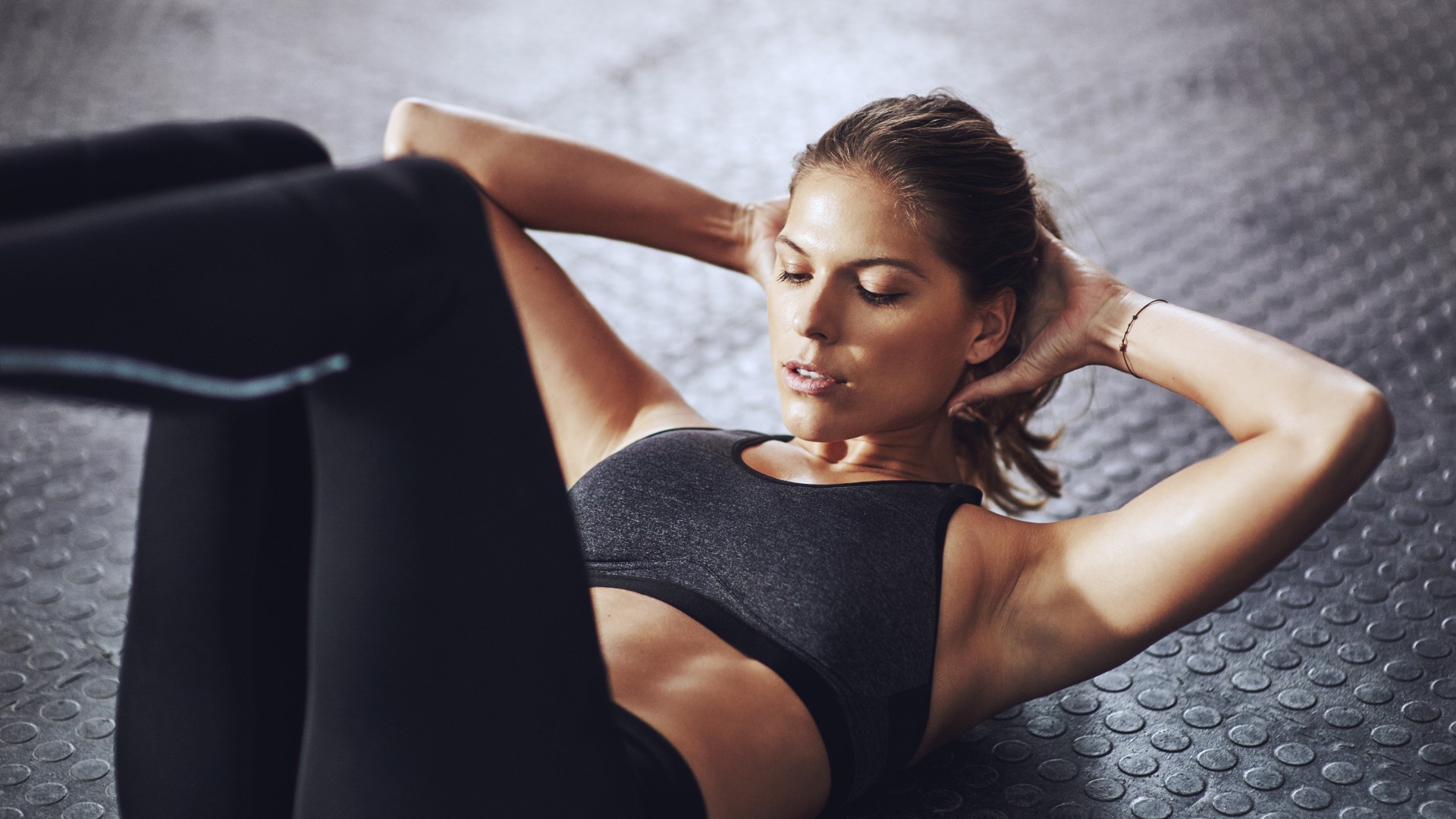
The horizontal ab squat is a core exercise that strengthens your lower abs and hip flexors without weights while remaining low impact on your joints. Take your humble bodyweight squat, flip it on its back and perform while lying on your back.
You can adapt the ab exercise in several ways to make it low impact or ramp up the intensity to smoke your abs even more. It also torches your hips and legs at the same time, making it a multi-tasking core exercise worth adding to your routine.
I like to perform horizontal ab squats on my Lululemon ‘The Mat,’ ($94, Lululemon) which made it into our best yoga mats guide, and if you have a wall close by, you can utilize this, too. Here’s how to do the bodyweight exercise, the benefits and ways to scale.
How to do horizontal ab squats
- Start on your back, bend both knees and lift your feet away from the floor into a tabletop position
- Slightly tuck your pelvis toward you to flatten your lower back to the mat, and engage your core muscles
- Rest your hands by your sides or behind your head to make the move harder
- Keep both feet flexed and press your feet away to extend your legs. Keep them roughly hip-height and hip-width apart
- Pause, then re-bend your knees and return to the starting position.
To progress the exercise, position a yoga block, Pilates ring, or dumbbell between your thighs and press lightly against it to help engage your adductors (the muscles along your inner thighs). Or, position between your feet or lower legs.
You can also try the isometric variation of horizontal ab squats, which means performing the exercise without moving. Set yourself up as above, but this time, with your feet pressed against a wall or stable, unmoving surface at hip height. Practice engaging your core, pressing your feet into the wall as hard as you can, then resting. Aim for 10 seconds on and 10 seconds off and repeat.
Horizontal squats are like bear squats flipped from prone to supine. Performed from a supine position, you can rest your lower back on the mat and focus on keeping it there throughout the exercise. If you begin arching your back, keep a soft bend in your knees or reduce how far you press your feet away from you.
Which exercise is best for lower abs?
Like most things in life, there’s no perfect solution for any single thing; in fitness, it’s a culmination of diet and a range of exercises and lifestyle choices that help dictate success.
Get instant access to breaking news, the hottest reviews, great deals and helpful tips.
Certain exercises target the lower abdominal muscles more than others, helping you strengthen your core and hips with better accuracy. Think of leg lifting exercises like leg raises, reverse crunches, or scissor kicks, for example.
The best exercises to target your lower abs will also tap into your deeper core muscles — a belt of muscle called the transverse abdominis which sits beneath the abs — and the hip flexors, which aid in lifting your legs into the air and act as stabilizer core muscles.
In the case of horizontal ab squats, you'll flex and extend the knee and hip joints as you move your legs toward and away from your midline, helping to reach deep into the lower abs and hips while naturally engaging your legs. You could practice extending and re-bending one leg at a time if you prefer, but moving both legs together will give you the most feedback from your core.
How do I target my lower abs?
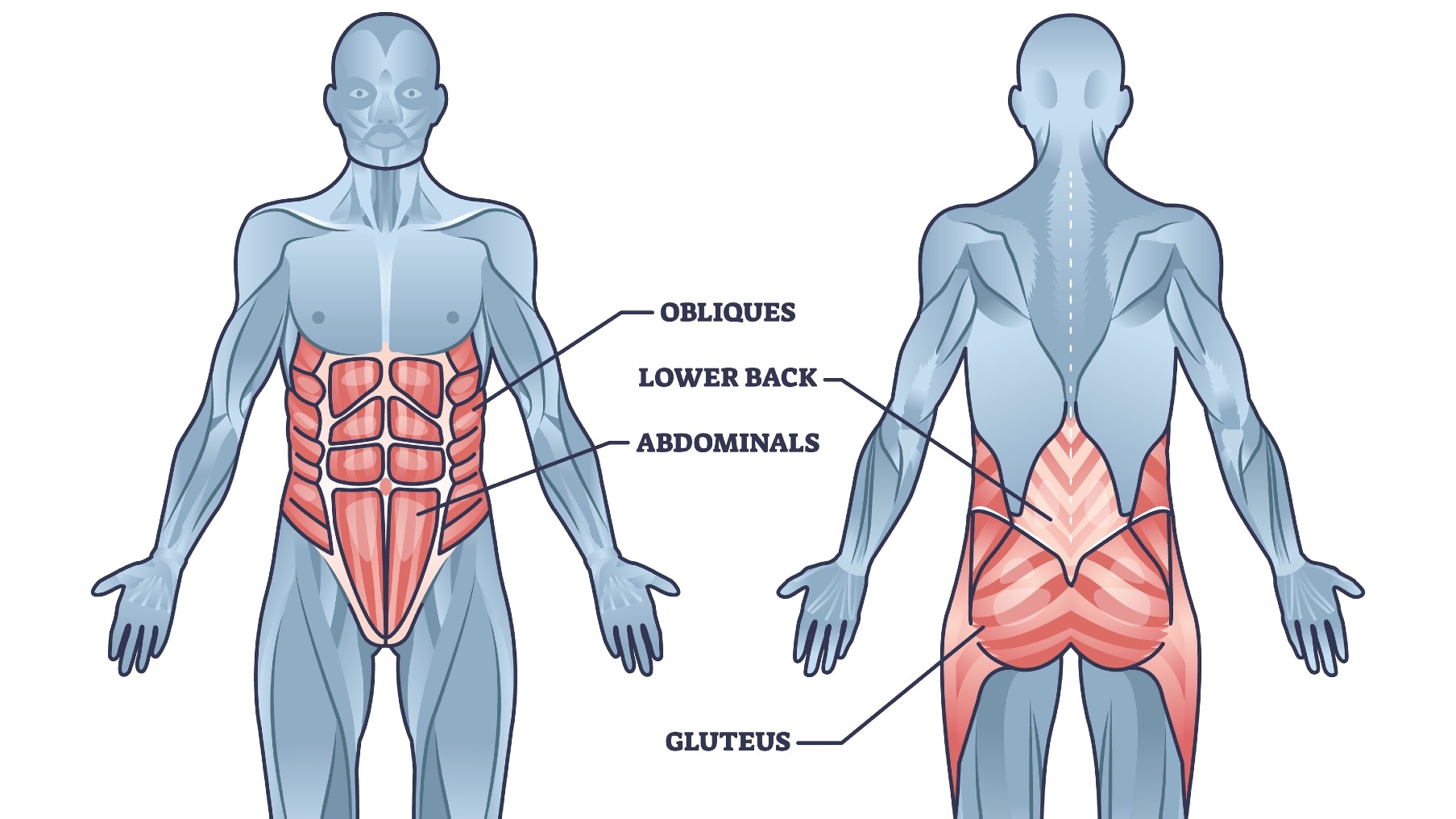
Think of the abs — the rectus abdominis — as a long slice of muscle that runs down the front of your stomach from the ribs to the pelvis. The lower abs sit closer to the hips, so movements that utilize hip flexion and extension are better bets when looking to strengthen this portion of muscles.
Focus on exercises that flex the hips and lift the legs, like hip thrusts, leg raises, hanging leg raises, or hip marching. Isometric ab exercises also hold muscles under contraction without lengthening or shortening, so consider low-impact resistance options like planks and wall squats.
More from Tom's Guide
- Forget the gym — you just need 7 minutes to sculpt your abs with this home workout
- You don't need the gym to build a stronger core — use these 3 dumbbell abs exercises instead
- No, not pigeon pose — unstick your hips with this 1-minute mobility exercise from a chiropractor

Sam Hopes is a level 3 qualified trainer, a level 2 Reiki practitioner and fitness editor at Tom's Guide. She is also currently undertaking her Yoga For Athletes training course.
Sam has written for various fitness brands and websites over the years and has experience across brands at Future, such as Live Science, Fit&Well, Coach, and T3.
Having coached at fitness studios like F45 and Virgin Active and personal trained, Sam now primarily teaches outdoor bootcamps, bodyweight, calisthenics and kettlebells.
She also coaches mobility and flexibility classes several times a week and believes that true strength comes from a holistic approach to training your body.
Sam has completed two mixed doubles Hyrox competitions in London and the Netherlands and finished her first doubles attempt in 1:11.

